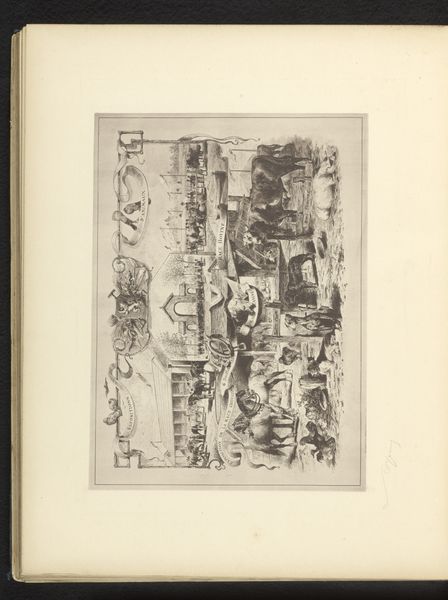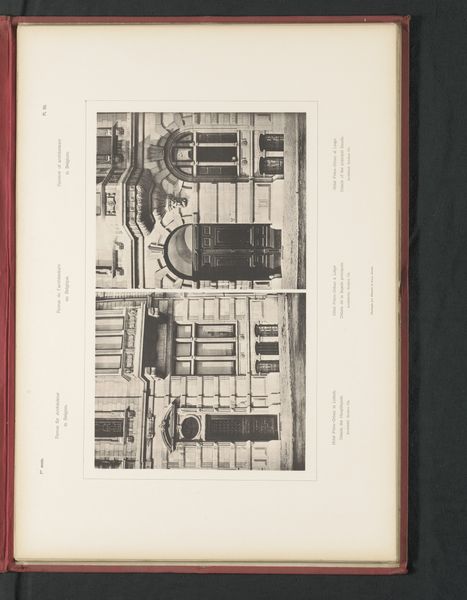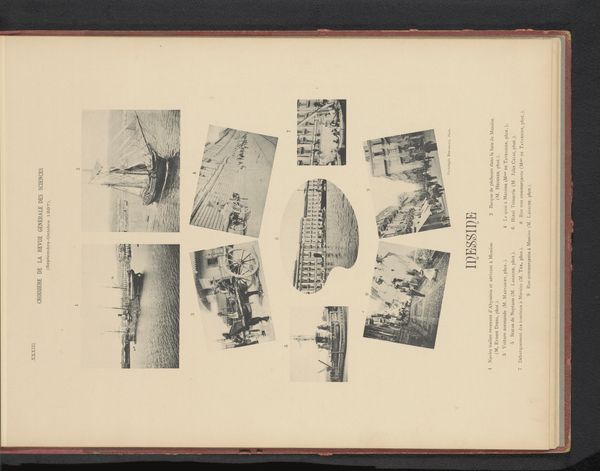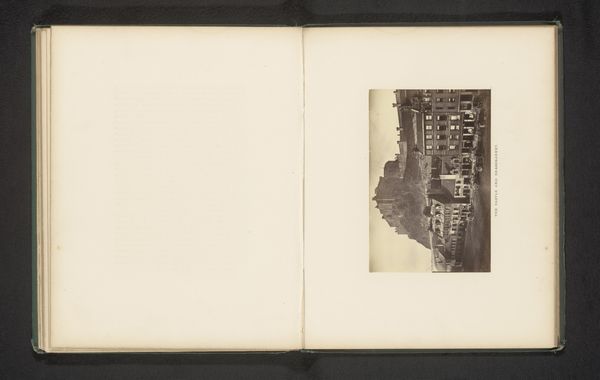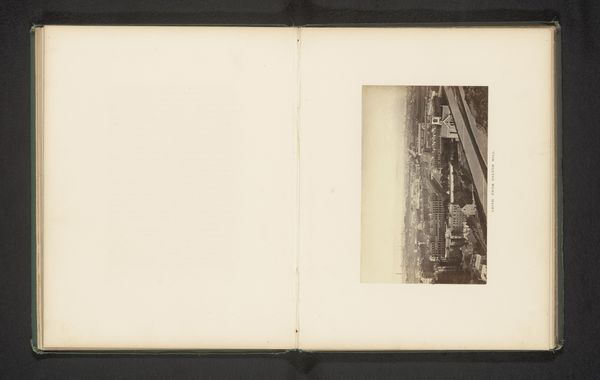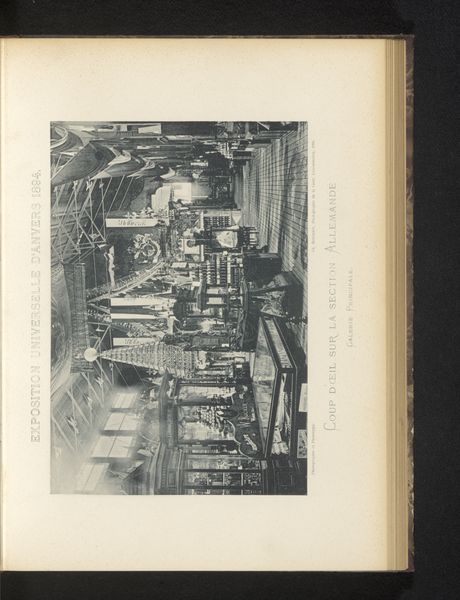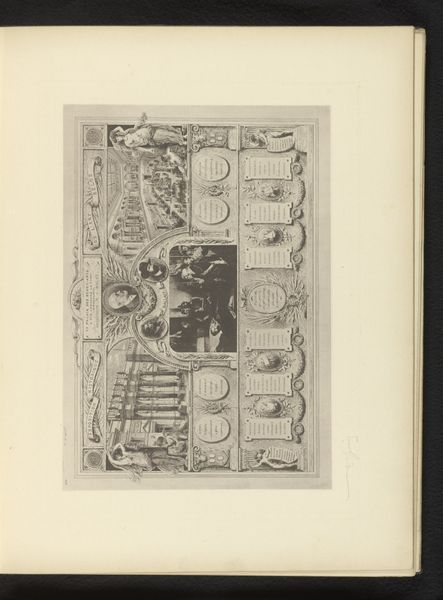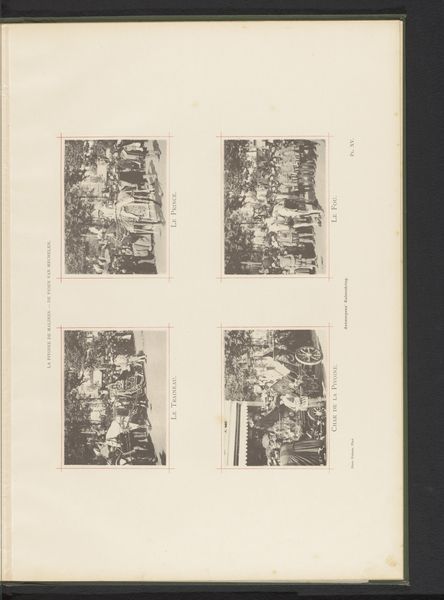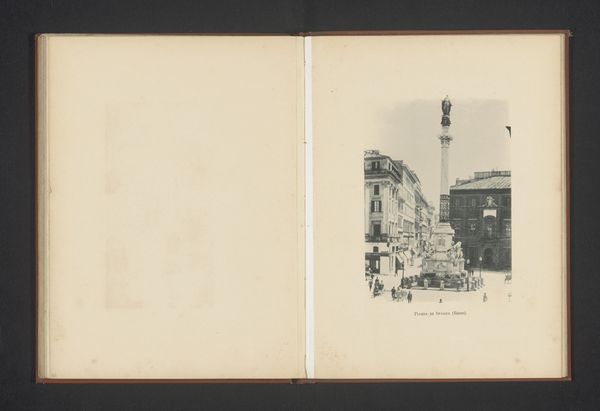
Reproductie van een gravure van de Exposition Nationale van 1880 in Brussel, waarin vier fotografische gezichten op de expositie zijn verwerkt, door Armand Heins 1881 - 1882
0:00
0:00
mixed-media, print, photography, engraving
#
mixed-media
# print
#
impressionism
#
landscape
#
photography
#
cityscape
#
engraving
#
realism
Dimensions: height 238 mm, width 247 mm
Copyright: Rijks Museum: Open Domain
This engraving by Armand Heins reproduces photographs of the National Exposition of 1880 in Brussels. Engraving is an intaglio printmaking technique where an image is incised onto a plate, usually made of metal. Ink is then applied into these grooves, and the excess is wiped clean from the surface. The plate is pressed against paper, transferring the ink and the image. The material precision in this engraving captures the industrial aesthetics on display at the exposition. The textures of machinery and architectural details are rendered with careful detail, showing the engraver's skill and the technologies featured. Engraving has a long history of use in commercial printing because it allows for the mass production of images with consistent high quality, which was invaluable for disseminating information about industrial and technological advancements. The act of reproducing photography through engraving also speaks to how visual media was understood and circulated during the 19th century. What was the social impact of the exposition? And how was this impacted by the means of its representation? These are question to keep in mind.
Comments
No comments
Be the first to comment and join the conversation on the ultimate creative platform.
